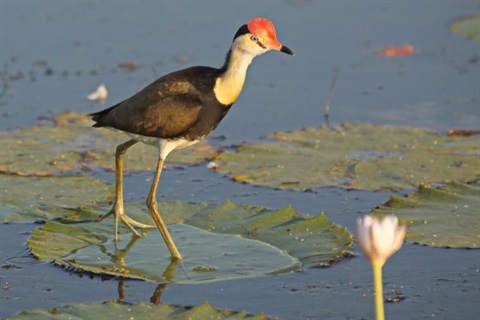Water pollution

Pest plants Algal blooms Fish kills
Council works to reduce pollution and improve water quality in the Tweed.
We can only act on certain complaints - we share responsibility for water pollution issues with other government bodies (see below).
Council receives calls about water pollution, odour, fish kills and algal bloom, especially in summer.
Please use common sense when swimming in creeks and lakes. Coastal creeks closer to the sea are generally well flushed with seawater and less likely to be harmful. Swimming in cloudy or discoloured water is not recommended.
Reporting water pollution
For emergency water pollution incidents, call Fire and Rescue immediately on 000.
Contact Council for
Report a water pollution problem online or contact Council's Environmental Health Services on 02 6670 2400 for:
- algal blooms
- drinking water concerns
- industry without an Environmental Protection licence causing water pollution
- pollution of beaches, estuaries, tidal lakes, rivers, creeks, streams and lakes
- sediment and erosion control at construction sites.
Contact other government agencies for
Contact the following agencies for:
Pest aquatic plants
Pest plants like Parrot’s Feather and Wandering Jew grow across shallows and must be controlled, along with noxious weeds like ‘salvinia molesta’ and ‘cabomba caroliniana’.
Salvinia floats on the surface, and in warmer months can double in size in 2 to 3 days. It is controlled by:
- Removal by mechanical harvester: weed is removed and can be used as a fertiliser. This method is used in the larger ponds of Vintage Lakes and channels in the Banora Waters areas.
- Biological control: an ant-sized non-native weevil (Cyrtobagous salviniae) is used to kill the weed. This method is used in the Club Banora Golf Course moat.
- Targeted herbicide spraying: carried out by Far North Coast Weeds on behalf of Council.
At the moment there’s no effective way of controlling the underwater cabomba weed (research is being carried out by CSIRO and the Department of Primary Industries).
Good aquatic plants
Waterlilies and Red Azolla (or Water Fern) provide nesting and foraging areas for Comb-crested Jacana birds.
Red Azolla is a native aquatic fern and is not removed from waterways unless salvinia is also present. Red Azolla can actually help to prevent algae blooms by competing with algae for nutrients.
Algal blooms and testing
Blue-green algae occur naturally, but can be toxic to people, pets and livestock. Avoid affected water (no swimming) during a red alert. Do not drink or use affected water.
Signs of affected water:
- green paint-like scum near the edges
- greenish clumps throughout the water.
If you think you may have been in contact with blue-green algal water seek medical advice.
Toxic algae can only be identified by trained personnel. If you think there's a blue-green algal bloom in the water contact:
Most algae are safe and are a natural part of aquatic ecosystems - found in freshwater, brackish and marine waters.
Blue-green algae are actually bacteria, and in the right conditions (high temperatures and lots of nutrients) can grow excessively (blooms). They can produce toxins, which in extreme cases can be lethal.
Marine blue-green algae blooms(PDF, 1MB) are often mistaken for oil or slimy effluent slicks on beaches and in rivers where it has been blown onshore by winds and tide. It decays quickly, usually turning greenish and then pink-red as it dies. It smells bad, like rotting plant matter or chlorine gas.
All blue-green algae blooms should be treated as potentially toxic to humans and animals. The water should not be used for potable water supply (without prior treatment), stock watering or for recreation.
More information
Fish kills
 A fish kill is defined as 'any sudden and unexpected mass mortality of wild or cultured fish'.
A fish kill is defined as 'any sudden and unexpected mass mortality of wild or cultured fish'.
Fish kills are often very visible and cause public concern because they're often perceived to be the result of pollution or water contamination.
There are many causes of fish kills, and sometimes they are due to natural events. In about half the fish kill events, the cause is not known. Where the cause is known, most cases are caused by:
- low dissolved oxygen
- pesticide or chemical pollution
- sewerage discharge or other pollution.
Report any fish death incidents to the Fishers Watch on 1800 043 536 or visit the NSW Department of Primary Industries website.